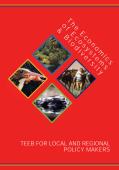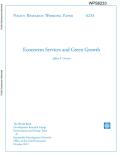China’s economy continues to grow rapidly with corresponding increases in both energy consumption and environmental pollution. Renewable energy is a key part of China’s response to this challenge. Currently, the costs of measures to facilitate the large-scale deployment of renewable energy are primarily met through an electricity surcharge—effectively a tax on electricity consumption. However, concerns have been raised that continuing to rely on the surcharge alone places a disproportionate burden on electricity consumers. In response, the International Institute for Sustainable Development (IISD) and the China National Renewable Energy Centre (CNREC) identified the need for further debate on how best to fund renewable energy and reduce environmental pollution, leading to the establishment of a research project to examine the international experience of similar schemes and their relevance to China.
The publication includes case studies from Australia, Canada, Denmark, Germany, India, Japan, the United Kingdom, and the United States.

This document is intended to offer inspiration and practicable suggestions for the improvement and maintenance of the welfare of the environment and its inhabitants. TEEB in Local and Regional Policy and Management shows how by taking nature’s benefits into account, decision makers can promote local development to ensure human well-being and economic growth and stability, while also maintaining environmental sustainability.
This volume of the TEEB series of studies explores the potential for local development provided by an approach based on nature. It offers examples of successful implementation of this approach from across the world, highlighting the importance of local decision making in management and planning. The study provide tools and practical guidance for reform, and examines what local governments can do with respect to natural resource use and management, maintaining and supporting biodiversity, local and regional urban and spatial design, as well as market-based approaches, such as Payment for Ecosystem Services (PES).

Agriculture accounts for 13 per cent of global GHG emissions. This rises to approximately 30 per cent if land clearance for farming, agrochemical production and trade in agricultural and food products are attributed to the sector. Market based mechanisms (carbon tax, cap and trade, payment for environmental services) and voluntary mitigation measures (carbon labelling and food miles) are reviewed for their effectiveness (if they reduce emissions), efficiency (the costs of the measures) and equity (fairness to suppliers). Measures to reduce agricultural emissions are limited in their effectiveness and efficiency by the technical difficulty and high costs of measuring, reporting and verification. However, pricing carbon would be effective in internalizing negative externalities in the transport, processing, retail and consumer purchase and preparation of food. The Global Trade Analysis Project (GTAP) model is used to illustrate that a US$ 40 carbon tax implemented in the EU would have little negative impact on developing country exporters of agricultural products due to their low carbon intensity.
The world is increasingly faced with the challenges stemming from the need to sustain an expanding global population while simultaneously addressing the environmental pressures that could threaten our ability to accomplish this. Green growth has emerged as a strategy to balance the historically divergent priorities of achieving economic growth and social development without putting at risk the environmental systems and natural capital we rely so heavily upon. This approach emphasizes the environmental and economic gains achieved by reducing inefficiencies in the management of resources and the stimulation of new sources of activity through innovation and green market growth.

"Ecosystem services" has become a catch-phrase for the complex connections between the natural environment and human well-being. This paper considers the impact of changes in the supply of ecosystem services, and programs to increase their supply, on near-term growth of gross domestic product. It focuses on the relationship between locally generated versus transboundary services and growth in developing countries, where the highest rates of ecosystem degradation tend to be found. There is a common perception that there is a tradeoff between environmental protection and economic growth, especially in the near term. This perception can make policymakers reluctant to support environmental protection. Where the environment is a source of economically important services, then environmental protection may stimulate growth of gross domestic product instead of reducing it. The paper considers evidence on the economic value of regulating services; the degree to which ecosystems actually supply some of the services they are commonly assumed to supply; and the near-term growth implications of restoring ecosystems, and reducing their loss.
